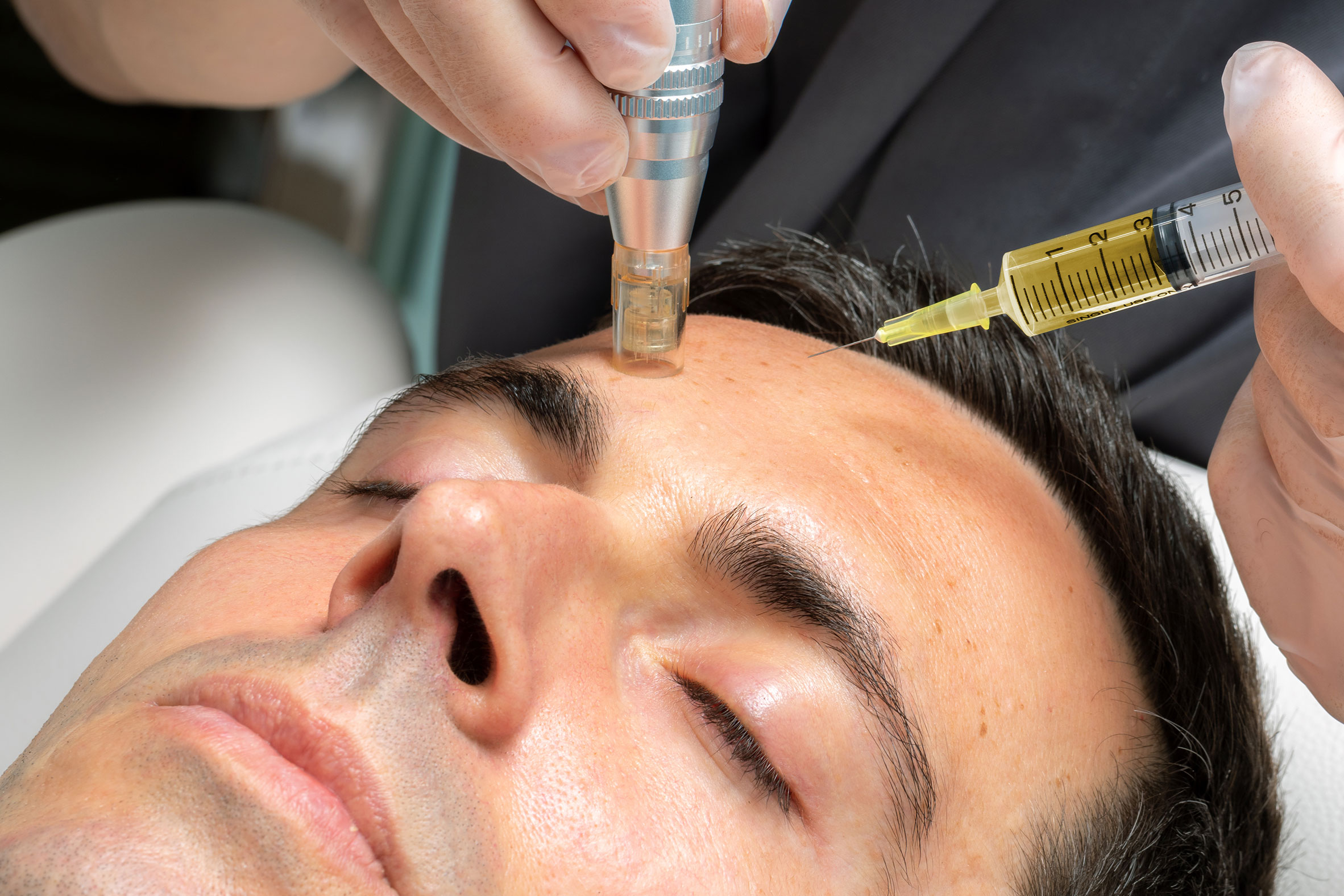
PRP (Platelet Rich Plasma) therapy has actually become a preferred technique of skin regrowth and rejuvenation in recent years. This therapy makes use of the body’s own plasma to boost cells and advertise recovery. Certain equipment and materials are needed to carry out a PRP treatment. In this short article, we give an introduction of the tools and supplies required.
Introduction to PRP treatments
What is PRP treatment?
PRP means “Platelet Rich Plasma”. It is a treatment approach used in visual appeals, sports medicine, dentistry and many other clinical areas. PRP makes use of the body’s very own healing processes by injecting a high focus of platelets directly right into the area to be dealt with.
Why choose PRP treatment?
PRP therapies are an increasingly preferred means of boosting wound recovery due to the fact that they harness the body’s own recovery capacity. They are risk-free, efficient and reduce the threat of negative effects and allergic reactions.
Required equipment for PRP treatments
Centrifuge
An important tool for performing PRP treatments is the centrifuge. It is utilized to divide the blood and extract the concentrated platelets.
The objective of PRP centrifugation is to enhance the concentration of platelets. Platelets are small blood cells responsible for blood clotting and wound recovery. They additionally contain development variables that advertise cells growth. Enhancing platelet concentration can increase the recovery process in numerous parts of the body.
Choosing the right PRP centrifuge
Choosing the right PRP centrifuge can be tough as there are various models on the market. It is necessary to choose a centrifuge that can supply a high focus of platelets and is also risk-free and easy to use.
The centrifuges e.g. from Hettich EBA 200/270 is perfectly ideal for PRP manufacturing.
However, the inexpensive centrifuges such as the EBA 200/270 only have authorization as artificial insemination analysis tools, i.e. for totally diagnostic examinations of blood parts busy.
Legally talking, you need a”method centrifuge” to make use of PRP. Centrifuges that are utilized for restorative therapy, e.g. for the production of autologous blood prep work, are informally referred to as “practicecentrifuges”. Because of this function, these centrifuges are classified as class 2a clinical gadgets.
Sadly, these class 2a centrifuges are somewhat a lot more expensive than regular research laboratory centrifuges.
- The only centrifuge worldwide with fractionated centrifugation with preset 6-part program and integrated sterilization cycle to stay clear of cross-contamination.
- A microprocessor control system allows preserving a constant speed.
- The exception rotor system with self-ventilation safeguards the blood sample from warm direct exposure.
- The blades holding compartment, cover, and examination tube holders ensure organic containment safety and security in case of test tube damage.
- The examination tube holders and blades are made of thermal antistatic material that is easy to clean, remove and sterilize in an autoclave at 135 °.
- Medifuge is equipped with a decontamination cycle with UVC-reflected light.
- The electronic control electric motor and its internal parts are maintenance-free. The noise degree is listed below the required requirements and does not surpass 57 dBa.
- To protect the electric motor, the control panel is furnished with existing and voltage control to stop electric overloads. In the event of a failure of the machine or the control card, the lid remains shut until the blades quits.
- Course 2a medical devices. The Medifuge CGF PRP centrifuge is the only centrifuge available on the marketplace that satisfies these needs.
The most important aspects to take into consideration throughout centrifugation are time, rate and temperature level, although few of the readily available PRP centrifuges have temperature control.
Temperature is a vital variable to take into consideration when working with biological material. Broadband produce rubbing and can warm the sample during centrifugation.
Temperature level control becomes even more vital when centrifugation is performed outside of a vacuum. Centrifugation outside the vacuum causes added drag and temperature increase. Research biologists commonly cool their centrifuges to compensate for the temperature rise brought on by friction.
If the example is heated up throughout centrifugation, platelets might be too soon activated. On top of that, the heat can harm the platelets and minimize their vitality.
PRP centrifugation: The latest technologies
In centrifugation, the blood is placed in a centrifuge and revolved rapidly. The spinning movement and resulting centrifugal force causes the different parts of the blood – such as platelets, red blood cells, and leukocyte – to migrate external according to dimension and thickness. This process is a vital part of platelet-rich plasma (PRP) therapy, and the much better the centrifuge, the far better results can be achieved.
It is necessary to recognize that it is not almost the rate of the centrifuge. It is also about centrifugal force, which relies on the dimension of the blades in the centrifuge. Current research studies reveal that there is a partnership in between centrifugal force (additionally called loved one centrifugal pressure or RZB/RCF) and the quantity of platelets we acquire.
If we utilize too high a centrifugal pressure, the platelets can be pushed into the stage with the red cell, and we get a plasma which contains practically no platelets – which is bad, given that platelets play a crucial role in recovery. For that reason, we are currently working with a reduced centrifugal pressure, and this has some advantages:
- It reduces the decay of the red cell.
- It stops the platelets from breaking down too early.
- We obtain a well sedimented plasma
- Cells that stick together are loosened (both big and small cells).
Consequently, centrifugation is a crucial step that needs to be performed carefully to acquire the very best possible outcomes.
PRP tubes
PRP stands for “Platelet Rich Plasma”. PRP tubes are unique tubes utilized to get PRP from an individual’s blood.
They are specifically created to assist in the separation of platelets and various other blood parts.
Area of application
PRP tubes are used in various areas, consisting of orthopedics, sporting activities medication, visual medicine and dermatology. They are used to treat hair loss, skin aging, osteoarthritis and sports-related injuries.
The PRP process with televisions described
Blood collection
PRP tubes are used in various areas, including orthopedics, sporting activities medicine, visual medication and dermatology. They are utilized to deal with hair loss, skin aging, osteo arthritis and sports-related injuries.
Centrifugation and PRP removal
Television is after that positioned in a centrifuge, which divides the blood into its parts. The platelet-rich plasma is then separated from the rest of the blood.
PRP injection
The extracted PRP is then injected into the locations to be dealt with. The platelets launch growth factors that contribute to cells regeneration and recovery.
What to try to find when selecting PRP tubes
Material
The material where the tubes are made can have a significant influence on the top quality of the blood sample.
Top notch glass tubes provide a greater yield of platelets than plastic tubes. Likewise, the high kinetic energy related to televisions during centrifugation makes plastic unsuitable.
- Material interaction: glass is normally inert to lots of organic materials, including blood. Plastic can communicate with particular organic materials, depending upon the kind, which can influence the top quality and stability of the sample.
- Sterility: glass can be sterilized at greater temperatures than most plastics. This makes it a more secure option for clinical applications.
- Openness: Glass tubes are typically much more clear than plastic tubes, making it easier for personnel to evaluate the materials and keep track of the progression of treatments such as centrifugation.
Anticoagulants and dividing gel:
Some PRP tubes include anticoagulants and dividing gel, which assist in the procedure of plasma collection. Other tubes, nevertheless, do not consist of these parts. It is important to comprehend the certain demands of your PRP therapy to make the very best choice.
Blood Collection Treatment
Some tubes utilize an unfavorable pressure technique to draw blood, which permits fast and easy collection.
Syringes and needles
Needles and syringes are likewise a vital part of any type of PRP treatment. They are made use of to remove the blood and infuse the PRP right into the treatment location.
Choice of suitable syringes and needles for PRP
Selecting the ideal syringe and needle can make the difference between an effective and a much less successful PRP therapy. It is necessary to pay attention to the size and intensity of the needle and to guarantee that the syringe is simple to manage.
Vacutainer / Blood Collection Sets
The option of the appropriate blood collection set relies on a number of variables, consisting of the dimension of the needle, the volume of blood to be accumulated, and the certain needs of the PRP treatment.
Blood collection sets for PRP therapies are a vital part of the PRP procedure. They make it possible for safe and effective blood collection, contribute to the efficiency of the treatment, and minimize threats and issues. It is important to pick the right collection and ensure that it is used by a qualified expert.







Isabel Miller
Mea probatus persequeris id.